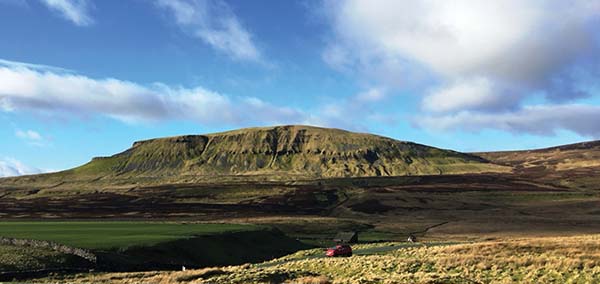

Confession – I have been a trainspotter since the age of 4, writing down the numbers of steam engines seen in my early youth, before they mostly went to the scrapyard. I still get a buzz if I see a preserved loco that I haven’t encountered before, and scrupulously underline it in my 60-year old Ian Allan ABC Spotters Guide. To make things worse, I collected plane and London bus numbers as well. I and friends would cycle down to the end of the runway at Heathrow (less security in those days) and our entire bodies would shake from the roar of a Caravelle taking off. Our bus spotting was perhaps not entirely ethical – we lived near the AEC factory in Southall where the Routemasters were built and could tick off the numbers before the vehicles had even left the maker’s yard! My wife is convinced that such obsessions put me on some kind of neurodiversity spectrum. She may be right, though I think the present fashion for labelling almost anyone who has a few quirky habits or traits with a mental health categorisation does a disservice to those with really disabling and distressing conditions such as severe autism and depression. But we’ll come back to that later.
Of course, Settle is quite a good place for trainspotting, and an even better one for my other love, of hillwalking. Physical challenge, the chance to admire the scenery and to spot the wildlife makes it all very worthwhile, but alas the hills are not exempt from the obsession with lists and ticking things off. It was Victorian laird Sir Hugh Munro who started it with his table of all the Scottish mountains rising more than 3,000 feet above sea level. His choice (the Munros) is in truth a bit arbitrary as some of his summits are just individual tops on a single ridge or plateau. Then Englishman John Rooke Corbett stepped in with his list of Scottish peaks between 2,500 and 3,000 feet. His choice was more rigorous and his Corbetts all have a drop (or prominence) of 500 feet between one summit and the next. Since then we have had a proliferation of Hewitt, Dewey, Graham, Fiona and Tump lists, covering particular regions and criteria, not to mention the Lakeland Wainwrights. The last were also a rather personal selection by the famously crusty hiker, all immortalised in his remarkable sketched and hand-written guidebooks.
However, all this numeracy, especially around distance above sea level, can be a bit spurious. Heights in Britain are set from a datum based at Newlyn in Cornwall defined by the Ordnance Survey in 1921 after six years measuring high and low tides. But in fact mountains, like share investments, can go both up and down. Our limestone Craven hills were of course formed under a primeval ocean. Sea level rise due to current climate change will become significant, but Britain is tilting as it recovers from the last Ice Age so the north-western peaks of Scotland are still creeping up. And even if seas were stable, that is only half the story. Everest, itself continuing to rise due to tectonic movement, may be highest above sea level, but since the earth is not a perfect sphere, the peaks of Chimborazo and Huascaran in South America vie for the distinction of being furthest from the centre of our planet.
It seems that in Britain we can use the term ‘mountain’ if the top is 2,000 feet above that Ordnance Survey baseline, so we are conveniently gifted a round number of 30 such summits in the Yorkshire Dales National Park. These tops qualify as Hewitts, the term an acronym from Hills of England, Wales, Ireland above Two Thousand, having more than 30 metres (roughly 100 feet) of drop all round. The walkers’ guide ‘The Dales 30’ is available from all good Settle outdoor shops!
But the most interesting list of British summits, based on prominence rather than just presumed height above a rather sloppy tideline, is the Marilyns. The term was coined by Alan Dawson as a tongue-in-cheek counterpoint to the Munros (Monroes!). He identified all the hilltops in the British Isles with a clear drop of 150 metres all round. Some of them are less than exciting. Crowborough Beacon down in Sussex is surrounded by bungalows on the edge of the town and nearer here, the high point of the Yorkshire Wolds is alongside the A166. Nevertheless, for the list ticker the Marilyns represent quite a challenge, not least because there are over two thousand to choose from, and they include the enormous sea stacks at remote St. Kilda which require landing onto a sheer cliff from a small boat in an Atlantic swell, dodging angry seabirds and then some serious rock climbing. If you’re not discouraged and want to start your list in our neighbourhood, the nearest Marilyns to Settle town centre are Fountains Fell and Penyghent, and they will count towards your Hewitt and Dales 30 score as well.
 Surely though, hill walking should be about more than nerdy summit scoring. Even if you are a bit of a tensed-up obsessive needing some mindfulness therapy, rambling the fells is provably good for mental as well as physical health. The type of exercise involved naturally releases the same type of chemicals inside your body as are included in anti-depressant drugs. Trekking magazine Trail supports a campaign called Mountains for The Mind which promotes activities and ideas for those with mental health issues to get benefit from roaming the moors and mountains. Check out www.mountainsforthemind.co.uk for more info.
Surely though, hill walking should be about more than nerdy summit scoring. Even if you are a bit of a tensed-up obsessive needing some mindfulness therapy, rambling the fells is provably good for mental as well as physical health. The type of exercise involved naturally releases the same type of chemicals inside your body as are included in anti-depressant drugs. Trekking magazine Trail supports a campaign called Mountains for The Mind which promotes activities and ideas for those with mental health issues to get benefit from roaming the moors and mountains. Check out www.mountainsforthemind.co.uk for more info.
But perhaps we list tickers shouldn’t feel too guilty. If collecting train numbers helps us appreciate the romance of Flying Scotsman or Tangmere chuffing up the Long Drag to Ribblehead, and hill-bagging takes us through fresh and inspiring landscapes, we can’t really be too weird or wicked!
Mountains can go up and down!
A footnote……
In my article about hill-walking and ‘summit-bagging’ in the April magazine (above) I wrote, slightly tongue or pen in cheek, that mountain measurements are rather more fluid than one might think. However, I wasn’t expecting to find a case in point so soon, or so close to home! In one of the rare sunny days since Easter I set out on a rail-based hike between Garsdale and Kirkby Stephen stations, over the ridge above Mallerstang Edge, taking in two of the Dales Thirty reputed 2000 foot ‘peaks’ at Little Fell and High Seat. It was a rewarding if challenging walk – I would recommend others to wait for the ground to dry out more from the recent inundations – but when I got home and came to log my achievement I was disconcerted to read that Little Fell had recently been usurped by nearby Sails as an absolute top. The WalkHighlands website told me that Sails is a summit of Lunds Fell, rising to the east of Mallerstang. It replaces the previous summit, Little Fell, which was slightly to the north, following survey work. Gosh! My old map does admittedly record only a one metre height difference between the two. Fortunately my route had taken me over Sails, so I was still able to tick a box, even though it wasn’t the box I was anticipating! In fact Sails, muddy lump though it is, lying at the south end of the ridge has finer views than Little Fell down towards Hawes and Wensleydale, and is more worthy of a visit by the everyday rambler. But the episode reminded me of the vanity of obsessive hilltop bagging, when I should really have been appreciating the splendid landscapes, and the curlew, golden plover and skylarks on the fell, as well as the barn owl and hare that crossed my path on the final part of the walk down towards Kirkby Stephen.



